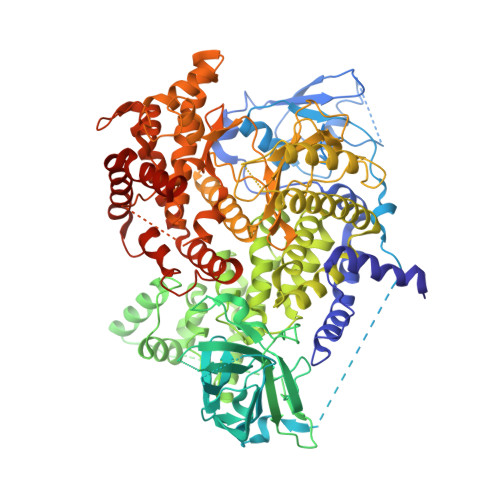Discovery of the Highly Potent PI3K/mTOR Dual Inhibitor PF-04979064 through Structure-Based Drug Design.
Cheng, H., Li, C., Bailey, S., Baxi, S.M., Goulet, L., Guo, L., Hoffman, J., Jiang, Y., Johnson, T.O., Johnson, T.W., Knighton, D.R., Li, J., Liu, K.K., Liu, Z., Marx, M.A., Walls, M., Wells, P.A., Yin, M.J., Zhu, J., Zientek, M.(2013) ACS Med Chem Lett 4: 91-97
- PubMed: 24900568
- DOI: https://doi.org/10.1021/ml300309h
- Primary Citation of Related Structures:
3ML8, 3ML9, 4HVB - PubMed Abstract:
PI3K, AKT, and mTOR are key kinases from PI3K signaling pathway being extensively pursued to treat a variety of cancers in oncology. To search for a structurally differentiated back-up candidate to PF-04691502, which is currently in phase I/II clinical trials for treating solid tumors, a lead optimization effort was carried out with a tricyclic imidazo[1,5]naphthyridine series. Integration of structure-based drug design and physical properties-based optimization yielded a potent and selective PI3K/mTOR dual kinase inhibitor PF-04979064. This manuscript discusses the lead optimization for the tricyclic series, which both improved the in vitro potency and addressed a number of ADMET issues including high metabolic clearance mediated by both P450 and aldehyde oxidase (AO), poor permeability, and poor solubility. An empirical scaling tool was developed to predict human clearance from in vitro human liver S9 assay data for tricyclic derivatives that were AO substrates.
- Cancer Chemistry, PDM, and Oncology Research Unit, Pfizer Worldwide Research and Development , La Jolla Laboratories, 10770 Science Center Drive, San Diego, California 92121, United States.
Organizational Affiliation:

















